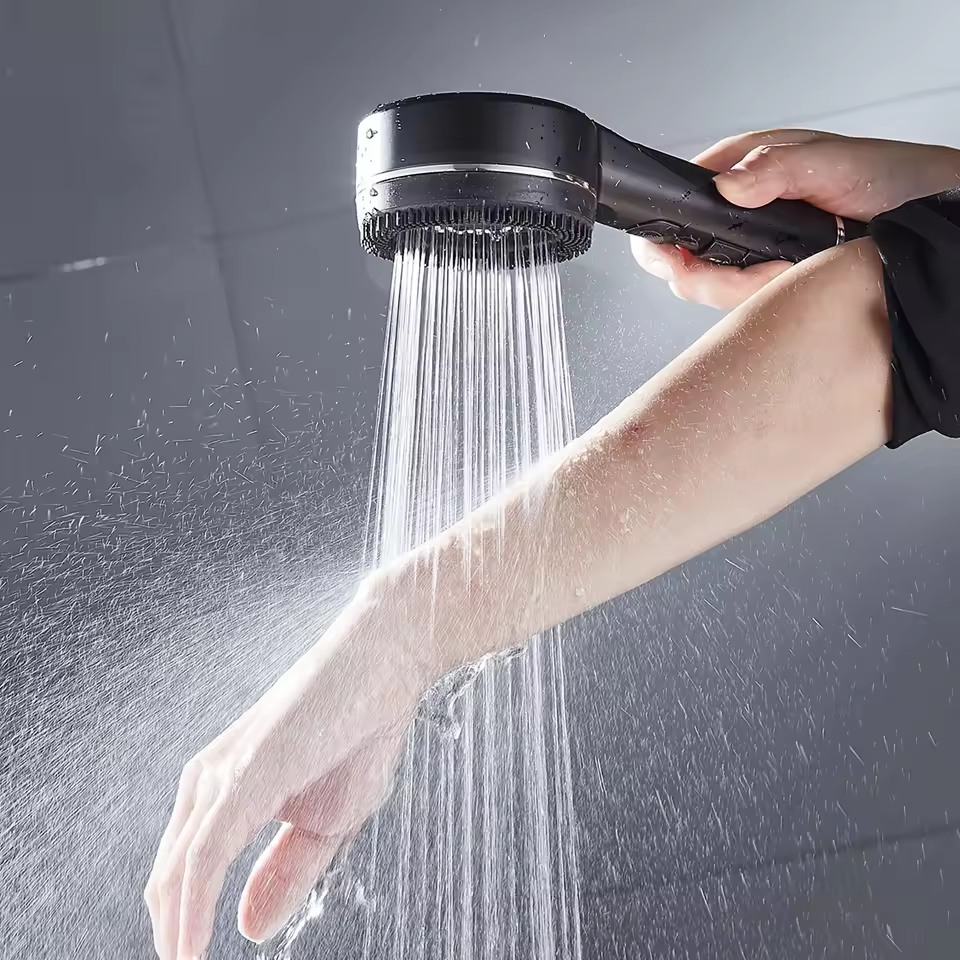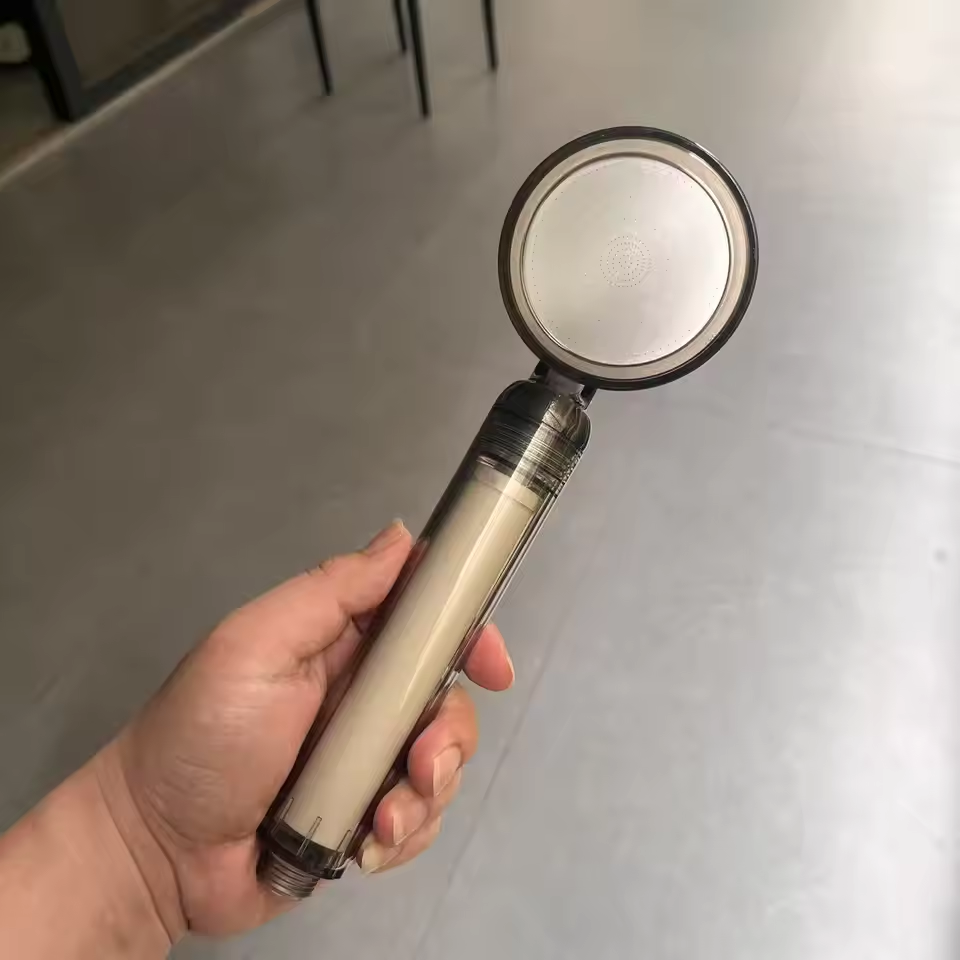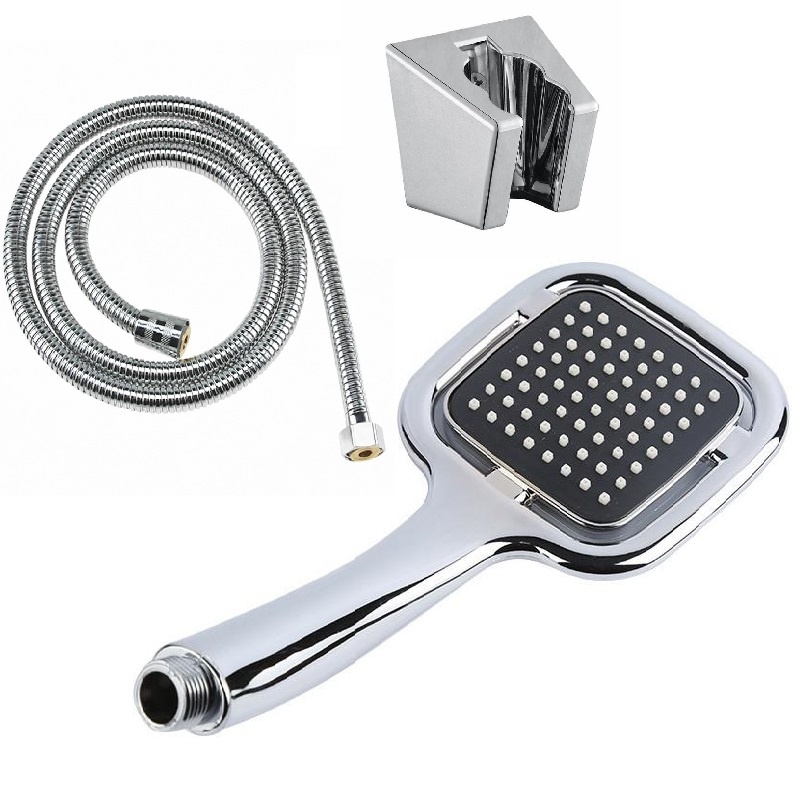Identifying the Cause of a Leaky Shower Head
Identifying the cause is the first step in learning how to fix a leaky shower head. Various factors could be at play, but some of the most common reasons are:
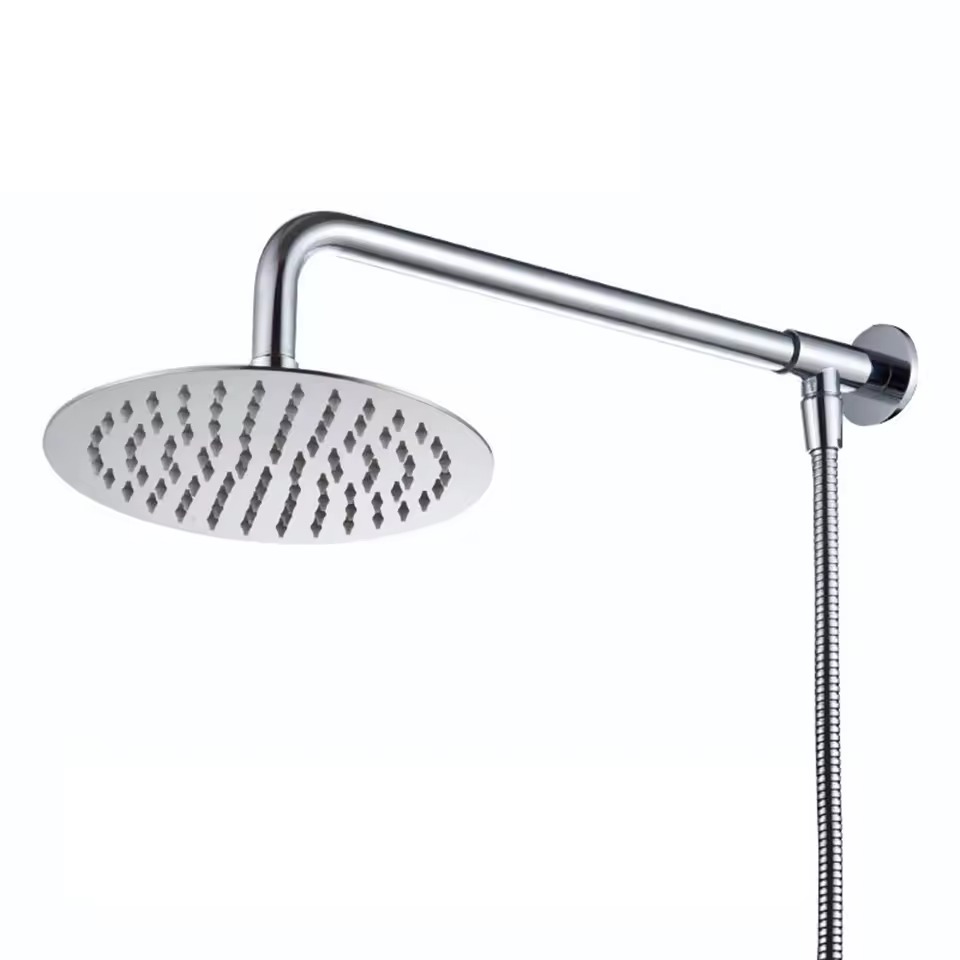
- Worn out O-ring or washer: With time and use, these parts may deteriorate and require replacement.
- Loose connections: A simple tightening of the shower head or pipe connections may resolve the issue.
- Clogged shower head holes: Mineral deposits can build up and obstruct water flow, causing leakage.
- Corrosion inside the shower head: Corrosion can lead to holes or cracks where water can escape.
Pinpointing the exact cause might need a bit of investigation. Take off the shower head and examine it for any visible damage. Look for signs of wear on the O-ring or washer, and inspect the threads on the pipe stem for corrosion or grime. If the problem isn’t immediately obvious, cleaning the shower head and replacing the washer might be a good place to start.
Essential Tools and Materials for Shower Head Repair
Before you start your journey on how to fix a leaky shower head, gather the right tools and materials. A smooth repair process depends on being prepared. Here’s a list of what you’ll need:
- Adjustable wrench or pliers: To loosen and tighten the shower head and pipe connections.
- Teflon tape: This helps ensure a watertight seal on the threaded connections.
- Replacement O-ring or washer: These are often the culprits behind leaks, so have them on hand.
- Vinegar and a small brush: Great for cleaning mineral deposits from the shower head holes.
- A cloth or rag: To protect the shower head’s finish when you use pliers or wrenches.
- A bucket or bowl: Handy for catching any drips when you remove the shower head.
- Plumber’s tape or thread sealant: If Teflon tape is not available, these can be alternatives.
These tools and materials are generally affordable and easy to find at your local hardware store. Having them ready before you start ensures that you won’t have to pause mid-repair to run out for a forgotten item.
Step-by-Step Guide to Fixing a Leaky Shower Head
Now that you have identified the possible causes of a leaky shower head and assembled your repair toolkit, let’s get down to the actual repair process. Follow these steps to learn how to fix a leaky shower head effectively and efficiently.
- Turn off the water supply: Ensure that the water supply to your bathroom is turned off. This prevents any accidental water flow.
- Remove the shower head: Use your adjustable wrench or pliers to carefully unscrew the shower head from the pipe stem. Remember to use a cloth to protect the shower head’s finish.
- Inspect and clean: Look at the O-ring or washer inside the shower head. If it’s worn out, replace it with a new one. Clean any mineral deposits using vinegar and the small brush.
- Apply Teflon tape: Wrap Teflon tape around the threads of the pipe stem to ensure a good seal. Overlap the tape to prevent gaps.
- Reassemble the shower head: Screw the shower head back onto the pipe stem by hand, then gently tighten with wrench or pliers. Be careful not to over-tighten as this can damage the threads.
- Test for leaks: Turn the water supply back on and observe if the leak has been fixed. Make adjustments if necessary.
- Final check: With no more leaks, give the shower head a final wipe down and enjoy your handiwork. Congrats, you’ve fixed your leaky shower head!
By following these straightforward steps, most leaky shower heads can be repaired quickly. Remember to work carefully and double-check each step to ensure a leak-free result.
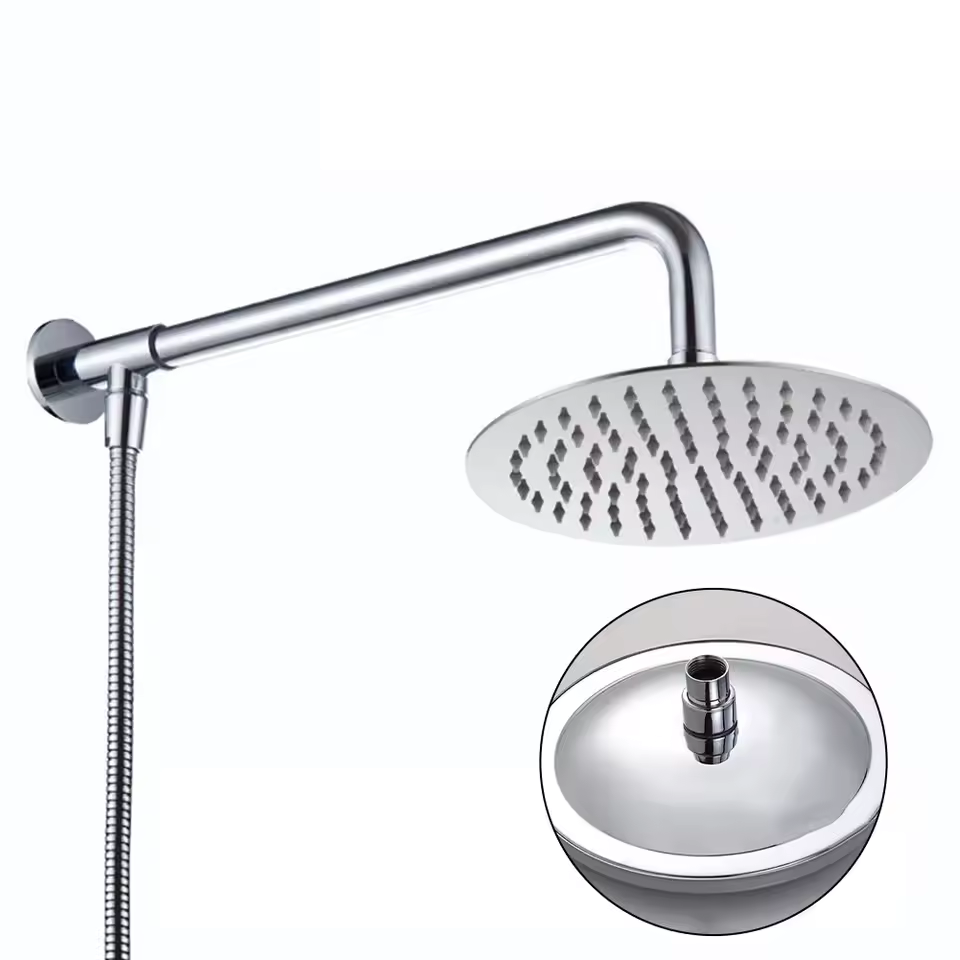
Troubleshooting Common Complications During Repair
When tackling how to fix a leaky shower head, you may encounter a few hitches. Stay calm and use these tips to troubleshoot common issues.
- Stubborn Shower Head: If the shower head won’t budge, apply heat gently with a hairdryer to expand the metal slightly. This can help loosen it.
- Stripped Threads: For threads that are damaged, wrap extra Teflon tape around the pipe stem. If this doesn’t work, you might need to replace the stem.
- Persistent Leaks: If leaks persist after replacing the washer and O-ring and reassembling the shower head, double-check for additional worn-out parts.
- Over-tightened Connections: If a connection is too tight, it could crack. Loosen it slightly to prevent further damage.
Remember to handle your tools and shower head carefully. You want to avoid causing more damage during the repair process. If issues keep coming up, consider if it’s time for a replacement instead of a repair. But often, with a little patience and the right approach, you can fix those issues and prevent future leaks.
When to Replace vs. When to Repair Your Shower Head
Deciding whether to repair or replace a faulty shower head can save you time and money. Here’s how to tell what action to take:
- Age and Frequency of Issues: If your shower head is old or frequently has problems, consider replacing it.
- Cost of Repair vs. New Shower Head: Sometimes, the cost of repair parts can approach the price of a new shower head. Compare prices before deciding.
- Severity of Damage: Look at the damage. Minor leaks often just need a quick fix. Major corrosion or breakage might call for a replacement.
- Water Efficiency: Modern shower heads are more water-efficient. Upgrading can reduce your water bill and benefit the environment.
- Updated Features: New shower heads offer features like adjustable spray patterns. If you want an upgrade, it’s time to replace the old one.
Repairing is usually the best choice for recent models or minor issues. For outdated or heavily damaged shower heads, replacement is often more practical. Always weigh the pros and cons based on your particular situation.
Preventative Measures to Avoid Future Leaks
Taking proactive steps to prevent future leaks can save you a headache down the road. Leaky shower heads can be annoying, and if left unchecked, they can lead to higher water bills and potential water damage. Implement these preventative measures to keep your shower in top shape:
- Regular Inspection: Make it a habit to inspect your shower head every few months.
- Clean Regularly: Use vinegar and a small brush to clear mineral deposits from the shower head holes.
- Replace Parts on Time: Change O-rings and washers before they wear out completely.
- Use the Right Tools: Always have the appropriate wrench or pliers for tightening.
- Avoid Over-tightening: When reassembling, tighten connections firmly but not too much.
- Follow Manufacturer Instructions: Pay attention to the care guidelines suggested by the maker of your shower head.
By keeping up with these simple tasks, you can reduce the risk of future leaks. This will help in extending the life of your shower fixtures, ensuring a steady and reliable performance over time. Remember, some issues might still arise, but with regular maintenance, those problems will be few and far between.
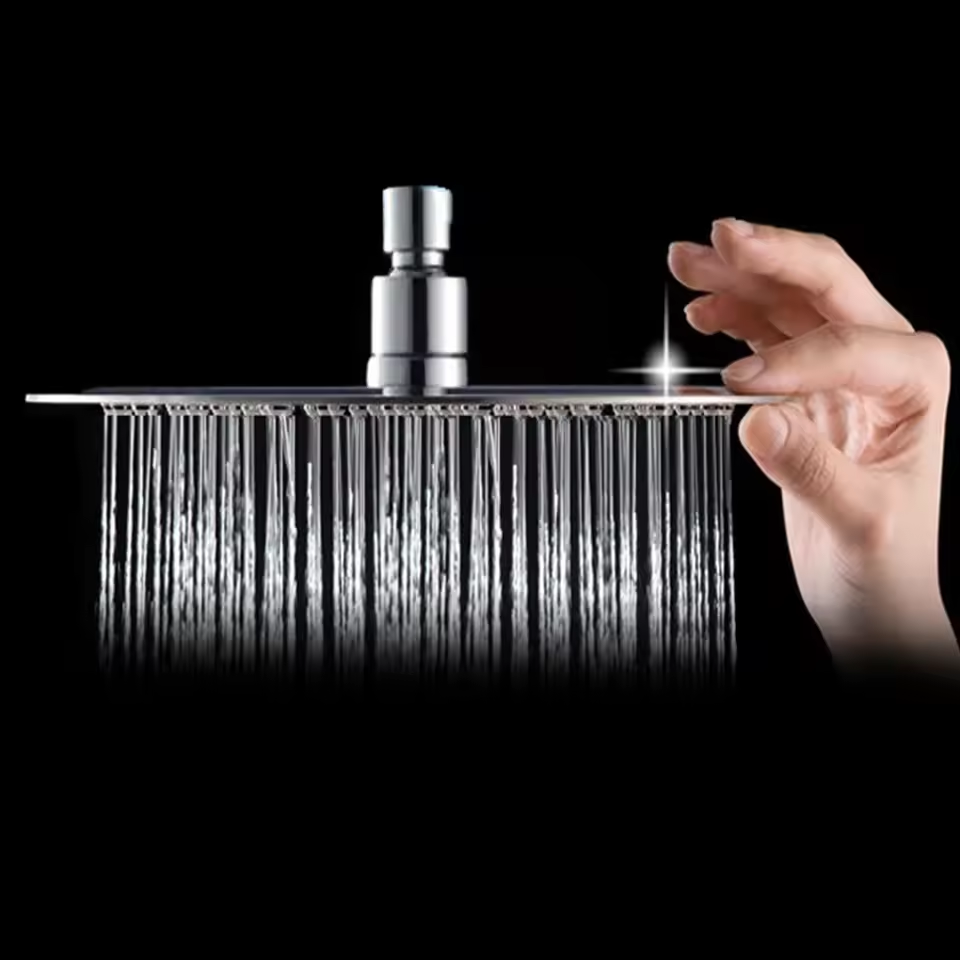
The Importance of Regular Maintenance for Shower Heads
Maintaining your shower head is crucial to ensure its longevity and performance. Regular maintenance isn’t just about preventing leaks; it also involves preserving water pressure and ensuring cleanliness to guard against bacteria and mold growth. Here’s why sticking to a maintenance routine for your shower head is important:
- Extends Shower Head Lifespan: Regular cleaning and replacing parts when needed can prolong the life of your shower head.
- Prevents Build-Up: Hard water can leave mineral deposits, which may block holes and affect water flow.
- Ensures Efficiency: Keeping your shower head in good condition makes sure it operates efficiently, saving you money on water bills.
- Improves Water Pressure: Clogged shower heads can reduce water pressure; cleaning helps maintain a strong flow.
- Promotes Health: A clean shower head prevents the growth of bacteria and mold, protecting your health.
To incorporate these maintenance practices, set calendar reminders to clean and inspect your shower head regularly. Replace parts like O-rings and washers as soon as you notice wear. This proactive approach can save you from future problems and give you a more enjoyable shower experience.
Remember, maintenance is easier and often less expensive than repairs. So make it a habit to look after your shower head, and it will look after you by providing a consistent, pleasant shower day in and day out.
Professional vs. DIY Repair: Making the Right Choice
When confronting a leaky shower head, you face a decision: should you fix it yourself or call a pro? Here’s how to decide.
Assessing Your Skill Level
Think about your experience and comfort with tools. If you’ve completed similar repairs before, a DIY approach might fit. Newbies may prefer professional help to ensure a proper fix.
Considering the Complexity of the Repair
Evaluate the leak’s cause. Simple washer replacements are DIY-friendly. For internal shower head problems, you might need a professional’s touch.
Time and Cost Efficiency
Weigh the time you’ll spend fixing it against a pro’s fee. Factor in the cost of tools if you don’t own them. Pros often resolve issues quicker, saving you time.
Risk of Future Damage
A mistake could cause more damage or void warranties. If uncertain, seek a pro. They have the right tools and knowledge to avoid costly errors.
Advantages of Professional Repair
Pros can diagnose problems fast and offer warranties on their work. Their expertise can prevent future leaks, saving you stress and money in the long run.
When to Opt for DIY Repair
Choose DIY if you have the skills, tools, and a straightforward repair. It’s satisfying and can save you the cost of professional services.
In the end, match your choice to your skills, the repair’s complexity, and potential risks. A successful fix, whether DIY or professional, keeps your shower head in top condition and helps avoid future issues.
